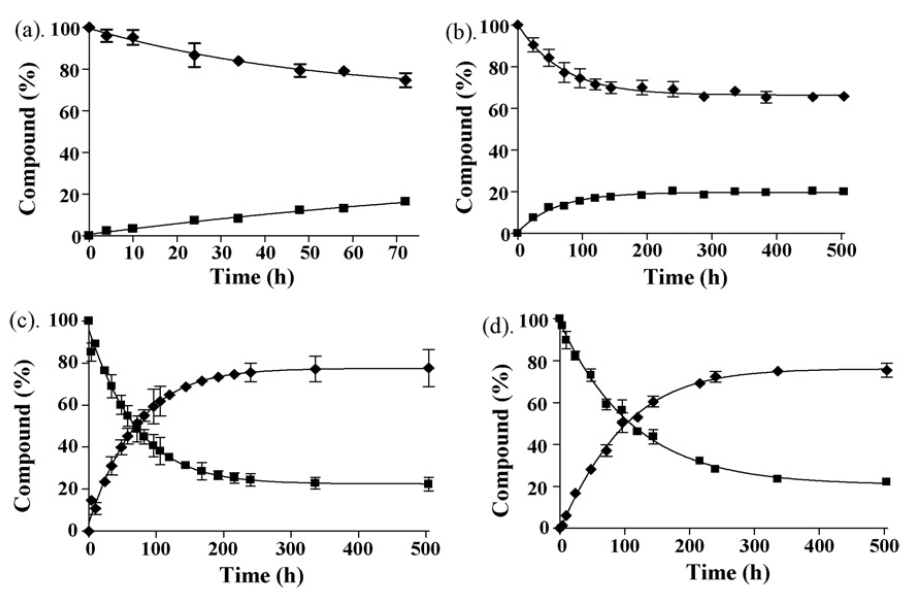- You are here: Home
- Services
- In Vitro DMPK Services
- Physicochemical Characterization Assays
- Chemical Stability Assays
Services
-
Cell Services
- Cell Line Authentication
- Cell Surface Marker Validation Service
-
Cell Line Testing and Assays
- Toxicology Assay
- Drug-Resistant Cell Models
- Cell Viability Assays
- Cell Proliferation Assays
- Cell Migration Assays
- Soft Agar Colony Formation Assay Service
- SRB Assay
- Cell Apoptosis Assays
- Cell Cycle Assays
- Cell Angiogenesis Assays
- DNA/RNA Extraction
- Custom Cell & Tissue Lysate Service
- Cellular Phosphorylation Assays
- Stability Testing
- Sterility Testing
- Endotoxin Detection and Removal
- Phagocytosis Assays
- Cell-Based Screening and Profiling Services
- 3D-Based Services
- Custom Cell Services
- Cell-based LNP Evaluation
-
Stem Cell Research
- iPSC Generation
- iPSC Characterization
-
iPSC Differentiation
- Neural Stem Cells Differentiation Service from iPSC
- Astrocyte Differentiation Service from iPSC
- Retinal Pigment Epithelium (RPE) Differentiation Service from iPSC
- Cardiomyocyte Differentiation Service from iPSC
- T Cell, NK Cell Differentiation Service from iPSC
- Hepatocyte Differentiation Service from iPSC
- Beta Cell Differentiation Service from iPSC
- Brain Organoid Differentiation Service from iPSC
- Cardiac Organoid Differentiation Service from iPSC
- Kidney Organoid Differentiation Service from iPSC
- GABAnergic Neuron Differentiation Service from iPSC
- Undifferentiated iPSC Detection
- iPSC Gene Editing
- iPSC Expanding Service
- MSC Services
- Stem Cell Assay Development and Screening
- Cell Immortalization
-
ISH/FISH Services
- In Situ Hybridization (ISH) & RNAscope Service
- Fluorescent In Situ Hybridization
- FISH Probe Design, Synthesis and Testing Service
-
FISH Applications
- Multicolor FISH (M-FISH) Analysis
- Chromosome Analysis of ES and iPS Cells
- RNA FISH in Plant Service
- Mouse Model and PDX Analysis (FISH)
- Cell Transplantation Analysis (FISH)
- In Situ Detection of CAR-T Cells & Oncolytic Viruses
- CAR-T/CAR-NK Target Assessment Service (ISH)
- ImmunoFISH Analysis (FISH+IHC)
- Splice Variant Analysis (FISH)
- Telomere Length Analysis (Q-FISH)
- Telomere Length Analysis (qPCR assay)
- FISH Analysis of Microorganisms
- Neoplasms FISH Analysis
- CARD-FISH for Environmental Microorganisms (FISH)
- FISH Quality Control Services
- QuantiGene Plex Assay
- Circulating Tumor Cell (CTC) FISH
- mtRNA Analysis (FISH)
- In Situ Detection of Chemokines/Cytokines
- In Situ Detection of Virus
- Transgene Mapping (FISH)
- Transgene Mapping (Locus Amplification & Sequencing)
- Stable Cell Line Genetic Stability Testing
- Genetic Stability Testing (Locus Amplification & Sequencing + ddPCR)
- Clonality Analysis Service (FISH)
- Karyotyping (G-banded) Service
- Animal Chromosome Analysis (G-banded) Service
- I-FISH Service
- AAV Biodistribution Analysis (RNA ISH)
- Molecular Karyotyping (aCGH)
- Droplet Digital PCR (ddPCR) Service
- Digital ISH Image Quantification and Statistical Analysis
- SCE (Sister Chromatid Exchange) Analysis
- Biosample Services
- Histology Services
- Exosome Research Services
- In Vitro DMPK Services
-
In Vivo DMPK Services
- Pharmacokinetic and Toxicokinetic
- PK/PD Biomarker Analysis
- Bioavailability and Bioequivalence
- Bioanalytical Package
- Metabolite Profiling and Identification
- In Vivo Toxicity Study
- Mass Balance, Excretion and Expired Air Collection
- Administration Routes and Biofluid Sampling
- Quantitative Tissue Distribution
- Target Tissue Exposure
- In Vivo Blood-Brain-Barrier Assay
- Drug Toxicity Services
Chemical Stability Assays
Creative Bioarray provides Chemical Stability Assays to determine the degradation of drugs under different conditions. These assays are carried out using various media, including simulated intestinal fluid (SIF), simulated gastric fluid (SGF), or buffers of different pH values.

Why is it necessary to determine drug chemical stability?
- Chemical stability of the drug includes reactions such as hydrolysis, dehydration, oxidation, photochemical degradation, or reaction with excipients.
- The constant presence of water and oxygen in our environment means that exposure to moisture or oxygen can affect chemical stability.
- Oral administration is the preferred route for new drugs. Compounds must remain chemically stable in the stomach under the low pH environment. Therefore, knowing whether a compound is stable in the low pH environment in vitro is essential information for predicting the suitability of oral administration.
- When assessing chemical stability, whether the compound degrades into toxic products and maintains potency in the intended dosage form are points of interest.
- Drug formulation, storage, and packaging need to be adjusted accordingly for chemically unstable compounds to reduce their chemical degradation.
Our Capabilities
- Hydrolysis, dehydration, oxidation, photochemical degradation, or reaction with excipients
- Stability in different pH buffers
- Stability in simulated gastric fluid (SGF)
- Stability in simulated intestinal fluid (SIF)
Brief Protocol
- The compounds were incubated with different buffers (or other conditions the customer requested).
- The mixture was then transferred into ice methanol.
- The concentration of undegraded compounds was detected using LC-MS/MS.
Study Example
 Figure 1. Degradation kinetics of [6]-gingerol and [6]-shogaol in simulated gastric fluid (a and c) and 0.1M HCl (b and d). The amount of [6]-gingerol (◆) and [6]-shogaol (■) at time (t) were determined by HPLC (Bhattarai, 2007).
Figure 1. Degradation kinetics of [6]-gingerol and [6]-shogaol in simulated gastric fluid (a and c) and 0.1M HCl (b and d). The amount of [6]-gingerol (◆) and [6]-shogaol (■) at time (t) were determined by HPLC (Bhattarai, 2007).
Quotation and ordering
If you have any special needs or questions regarding our services, please feel free to contact us. We look forward to cooperating with you in the future.
References
- FDA. Guidance for Industry. Drug Stability Guidelines. (2008)
- Wang, Binghe, Longqin Hu, and Teruna J. Siahaan. Drug delivery: principles and applications. John Wiley & Sons, 2016.
- Bhattarai, Sushila; et al. "Stability of [6]-gingerol and [6]-shogaol in simulated gastric and intestinal fluids." Journal of pharmaceutical and biomedical analysis 45.4 (2007): 648-653.
Explore Other Options
For research use only. Not for any other purpose.

